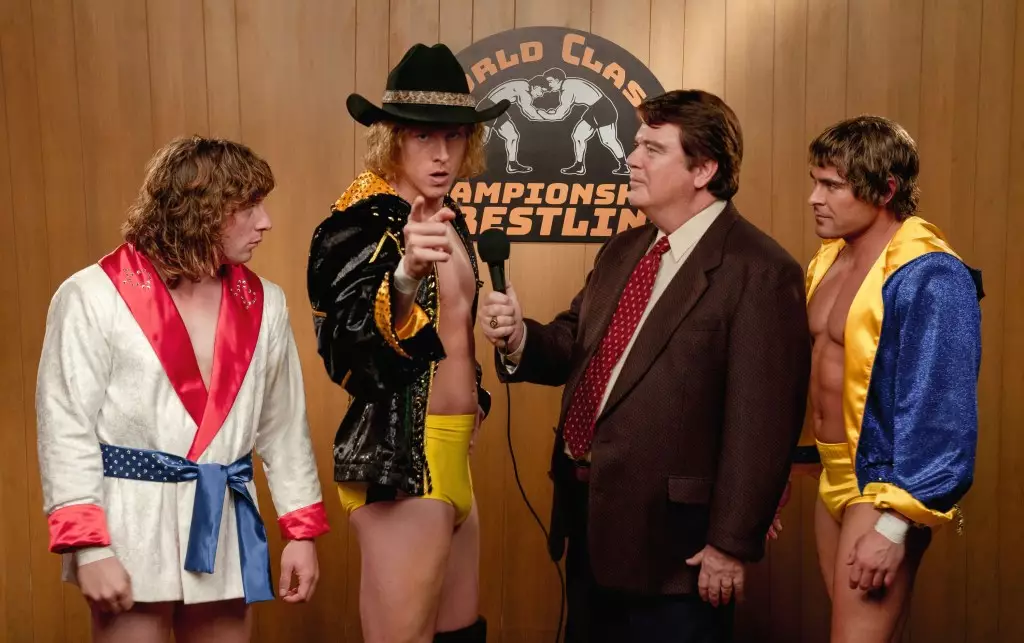Unveiling the heart-wrenching tale of the legendary wrestling Von Erich family, “The Iron Claw” brings forth a gripping narrative that delves into their triumphs and tragedies. In this riveting biopic, writer-director Sean Durkin skillfully crafts a two-hour saga, paying homage to four brothers who forged their paths in the wrestling world. However, amidst the compelling storyline, one cannot help but contemplate the artistic choices and the weight of the omissions made in presenting the Von Erichs’ lives.
Delving into the Family Tragedies
Durkin fearlessly confronts the family’s darkest moments, shedding light on the catastrophic events that befell the Von Erichs. The heartbreaking demise of David Von Erich, succumbing to an intestinal rupture possibly resulting from wrestling injuries, lays bare the toll of this brutal profession. Furthermore, the film unflinchingly portrays the suicides of Mike and Kerry Von Erich, as they battled demons stemming from wrestling-related physical and psychological traumas. These tragedies encompass the true essence of the Von Erichs’ tale, leaving viewers haunted by the profound impact of their chosen profession.
Regrettably, amidst the harrowing accounts of the brothers’ lives, a pivotal figure remains absent from the narrative. Chris Von Erich, the youngest brother who tragically took his own life at the tender age of 21, is not included in the film. This exclusion, though potentially due to time constraints and narrative limitations, leaves a void in the story. Chris’ untimely demise and its potential impact on the family dynamic could have added a profound layer of emotional depth to the already tragic narrative.
Challenges of Condensing a Life
Capturing the essence of an individual’s life within the confines of a feature film demands extraordinary skill. Durkin grapples with this challenge, ultimately focusing on the lives of Fritz, Kevin, David, and Kerry Von Erich. The decision to streamline the narrative to four brothers allows for a more comprehensive exploration of their individual stories, while still preserving the overarching theme of family struggle. However, in light of the limited time frame, sacrifices must be made, and the omission of significant events and individuals becomes an inevitability.
Despite lacking direct contact with the Von Erich family before production, Durkin’s personal connection to their story undeniably infuses passion into his work. As a child wrestling fan, Durkin’s love for the sport and admiration for the Von Erichs drive him to meticulous attention to detail. Wrestling timelines and historical accuracy become focal points of his obsession during the filmmaking process. However, the challenge lies in striking a balance between historical authenticity and the requirements of the narrative. Durkin skillfully weaves a tapestry of real and fictional elements, ensuring the story flows harmoniously while maintaining the essence of the Von Erichs’ legacy.
“The Iron Claw” serves as a haunting reminder of the immeasurable personal and emotional toll that the wrestling industry can exact upon its participants. Through the lens of the Von Erich family, the film sheds light on the hidden struggles, both physical and mental, faced by those who step into the ring. Their story leaves an indelible mark on viewers, provoking introspection on the price of fame, the weight of family legacies, and the importance of mental health awareness within the wrestling community and beyond.
“The Iron Claw” stands as a testament to the indomitable spirit of the Von Erich family. Durkin’s careful construction of their story, coupled with his artistic choices and narrative omissions, creates a film that captures the essence of their triumphs and tragedies. This biopic serves as a poignant reflection on the wrestling world and the profound impact it can have on those entangled within its grasp.


Leave a Reply